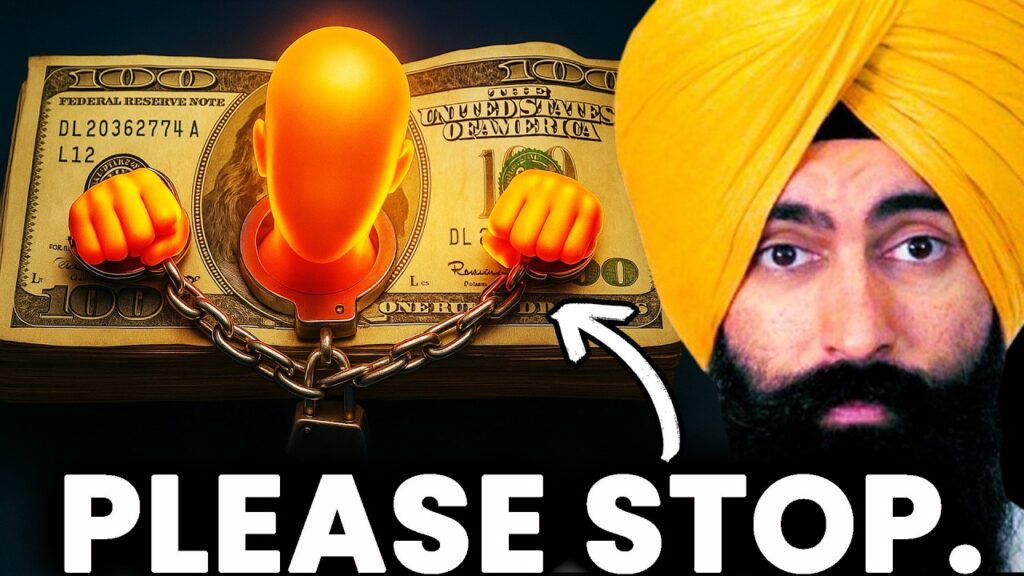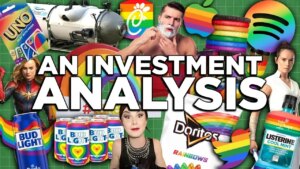Why Passive Investing Will Leave You Broke and Angry

Everybody wants passive income. But most people have no idea what passive income actually means. They hear gurus promising “make money while you sleep” and think it’s about starting a side hustle, creating a course, or launching a business that magically prints money with no effort. That’s not passive income. That’s just another job. True passive income comes from investments assets you buy once that keep paying you whether you work or not. Stocks, ETFs, and real estate are real passive income generators. A business can create passive income eventually, but it takes enormous work upfront. So if you want true passive income, you need to start investing your extra money not creating more labor.
Cash Flow Is the Foundation of Real Passive Income
Passive income isn’t about getting rich tomorrow. It’s about building streams of cash flow over time. And the good news is you don’t need to start with thousands. You can begin with $100. The key is to buy assets that pay you whether the stock market is up or down. Cash flow is what makes financial freedom possible, because once the cash your assets generate becomes larger than your expenses, you’re free. Not retired from life but free to do what you love without worrying about bills.
How Stocks Create Passive Income
When you invest in a company like McDonald’s, you’re not just buying a piece of a brand you’re buying a slice of its profits. In 2024, McDonald’s generated over $8 billion in profits. A portion of that goes straight back to shareholders in the form of dividends. McDonald’s pays roughly $7 per share annually, and when you own shares, you get paid just for holding them. The company earns money, pays you, and the stock continues to exist. That’s passive income. But buying stocks for dividends isn’t enough. You need to understand the balance between dividend yield and stock growth. For example, Coca-Cola went up 30% over five years. Merck only rose 11% over the same period. A big dividend looks attractive, but if the stock isn’t appreciating, your overall return may be weaker.
Why Dividend ETFs Make Passive Income Easier
If picking stocks feels overwhelming, dividend ETFs are the cheat code. An ETF is a basket of companies, so you get diversification without researching individual businesses. Some of my favorites include NOBL (2% yield, invests in dividend aristocrats), SCHD (around 3.75% yield), VIG (1.6% yield, focused on dividend growers), and VYMI (4% yield with international exposure). These ETFs allow you to get passive income with less risk and less effort. They’re perfect for people who want portfolio growth and income at the same time.
The Strategy Behind Long-Term Passive Investing
The real magic happens when you follow a disciplined system. Buy good investments consistently, reinvest the dividends, and don’t stop just because the market dips. In the early years, the returns are tiny almost disappointing. But by year ten? It becomes a snowball. The dividends grow, you reinvest them, your share count multiplies, and your income compounds. This is how passive income is actually built not by chasing hype, but by staying consistent over time.
Real Estate: The Other Passive Income Powerhouse
Real estate is another wealth-building monster if you buy properties for cash flow, not emotion. A rental property doesn’t care where you work or if you get laid off. It just pays you every month. Let’s say you buy a $250,000 rental. The rent is $2,500 per month. Subtract taxes ($250), insurance ($225), maintenance ($250), and management ($250). You’re left with about $15,800 in annual profit—around a 6.3% cash-on-cash return. Ideally, you want 7% or higher. Over time, rents rise, your mortgage stays fixed, and your profit increases. Meanwhile, the property is appreciating. That’s cash flow and equity growth two forms of wealth at the same time.
The Hidden Tax Benefits of Real Estate
The IRS gives real estate investors some of the best tax breaks in the entire economy. Depreciation lets you deduct the “wear and tear” of a property every year even if the property is increasing in value. For a $200,000 building, that deduction is about $7,200 per year. And with accelerated depreciation, your first few years of deductions can be massive sometimes enough to make your taxable income look negative even though you’re collecting positive cash flow. That means earning money while paying little (or no) taxes. This is why wealthy families love real estate.
House Hacking: The Fastest Way to Start With Little Money
If you don’t have much capital, house hacking is one of the most powerful strategies. Buy a duplex, triplex, or four-unit property. Live in one unit, rent out the others. On a $1 million 4-unit building generating $7,500 per month in rent, your expenses might leave you with negative cash flow at first because of the mortgage. But you’re living for free or close to it and after one year you can move out and rent the last unit. Then it’s a true cash-flow machine with a lower owner-occupied interest rate locked in. You’re building wealth while reducing your biggest expense housing.
Where Cash Fits In Your Passive Income Plan
Savings accounts won’t make you rich. But they do protect your cash from losing value. A traditional bank at 0.4% interest is basically theft when inflation is 3–4%. A 5-year CD at 1.3% doesn’t help much either. But high-yield savings accounts at 4% make far more sense for emergency funds and short-term savings. Cash won’t build wealth, but it stops you from falling behind while your investments do the heavy lifting.
The Truth About Passive Income
Most people stay broke because they chase shortcuts. They start a business and call it passive income. They buy a course promising overnight wealth. They scroll social media and hope something magic will happen. But real passive income isn’t magic. It’s math. It’s assets. It’s cash flow. It’s consistency. If you want passive income that won’t leave you broke, angry, and frustrated, you need to focus on proven assets stocks, ETFs, real estate and stay patient long enough to let them grow. Build the machine before you expect it to pay you.
Jaspreet Singh is not a licensed financial advisor. He is a licensed attorney, but he is not providing you with legal advice in this article. This article, the topics discussed, and ideas presented are Jaspreet’s opinions and presented for entertainment purposes only. The information presented should not be construed as financial or legal advice. Always do your own due diligence.






